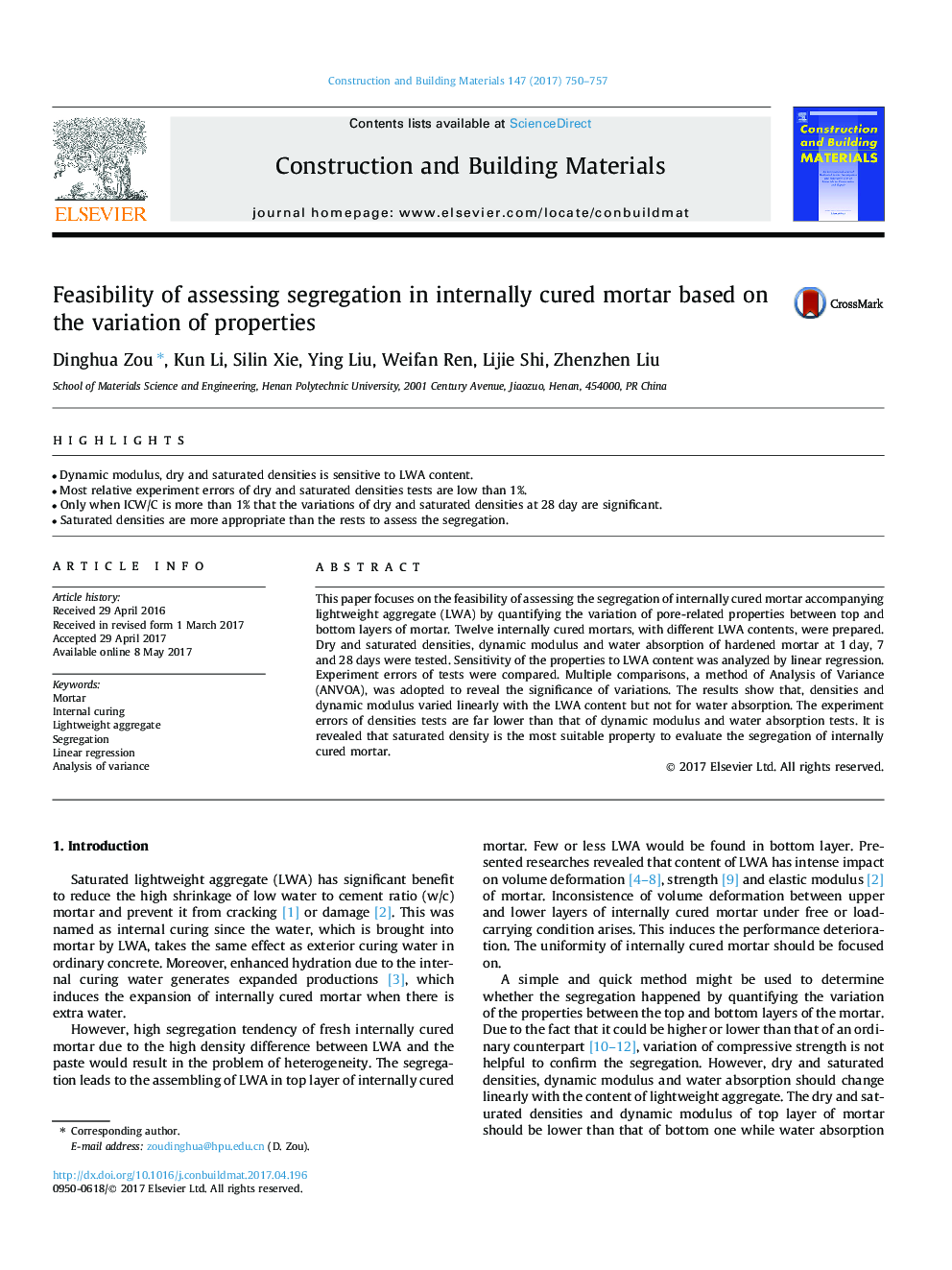| Article ID | Journal | Published Year | Pages | File Type |
|---|---|---|---|---|
| 6480612 | Construction and Building Materials | 2017 | 8 Pages |
â¢Dynamic modulus, dry and saturated densities is sensitive to LWA content.â¢Most relative experiment errors of dry and saturated densities tests are low than 1%.â¢Only when ICW/C is more than 1% that the variations of dry and saturated densities at 28 day are significant.â¢Saturated densities are more appropriate than the rests to assess the segregation.
This paper focuses on the feasibility of assessing the segregation of internally cured mortar accompanying lightweight aggregate (LWA) by quantifying the variation of pore-related properties between top and bottom layers of mortar. Twelve internally cured mortars, with different LWA contents, were prepared. Dry and saturated densities, dynamic modulus and water absorption of hardened mortar at 1Â day, 7 and 28Â days were tested. Sensitivity of the properties to LWA content was analyzed by linear regression. Experiment errors of tests were compared. Multiple comparisons, a method of Analysis of Variance (ANVOA), was adopted to reveal the significance of variations. The results show that, densities and dynamic modulus varied linearly with the LWA content but not for water absorption. The experiment errors of densities tests are far lower than that of dynamic modulus and water absorption tests. It is revealed that saturated density is the most suitable property to evaluate the segregation of internally cured mortar.
